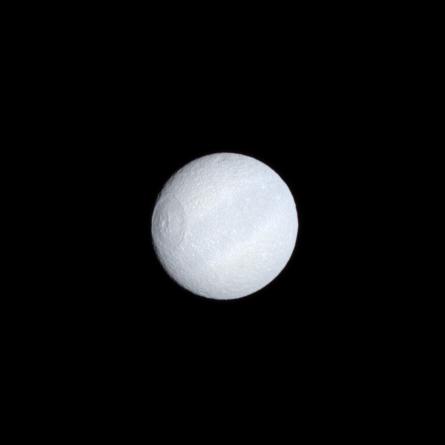Tethys’ Subtle Hues

| PIA Number | PIA10538 |
|---|---|
| Language |
|
Tethys' dark equatorial band is seen in natural color on the moon's leading hemisphere.
The largest impact basin on Tethys, Odysseus (400 kilometers, or 250 miles, across), appears on the left.
Images taken using red, green and blue spectral filters were combined to create this natural color view. The images were acquired with the Cassini spacecraft narrow-angle camera on Oct. 27, 2008 at a distance of approximately 1.203 million kilometers (747,500 miles) from Tethys and at a Sun-Tethys-spacecraft, or phase, angle of 10 degrees. Image scale is 7 kilometers (4 miles) per pixel.
The Cassini-Huygens mission is a cooperative project of NASA, the European Space Agency and the Italian Space Agency. The Jet Propulsion Laboratory, a division of the California Institute of Technology in Pasadena, manages the mission for NASA's Science Mission Directorate, Washington, D.C. The Cassini orbiter and its two onboard cameras were designed, developed and assembled at JPL. The imaging operations center is based at the Space Science Institute in Boulder, Colo.
For more information about the Cassini-Huygens mission visit http://saturn.jpl.nasa.gov . The Cassini imaging team homepage is at http://ciclops.org .
Credit: NASA/JPL/Space Science Institute
